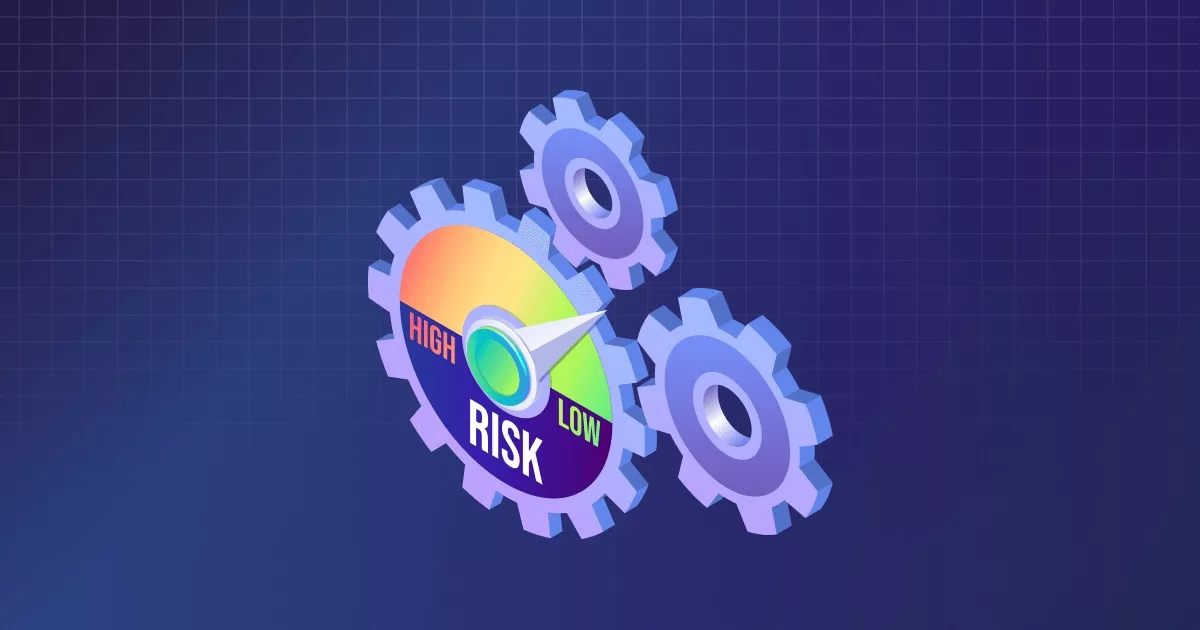
Investing in financial assets like stocks or cryptos can be exciting and lucrative, but it has risks.
One of the biggest risks investors face is systematic risk. This type of risk affects all assets and can lead to significant losses in a portfolio.
In this article, we will explore the concept of systematic risk in more detail, including the different types of systematic risk that investors should be aware of and real-life examples of how these risks can impact the market.
What is Systematic Risk?
Systematic risk refers to the risk that is inherent in the overall market or economy and cannot be completely eliminated through diversification. It is also known as a non-diversifiable risk. This type of risk is not specific to a particular company or industry.
Investors are exposed to systematic risk when investing in the stock or crypto market, as events such as inflation, recession, and geopolitical tensions can affect the market as a whole. This means that regardless of how well an investor diversifies their portfolio, they cannot eliminate systematic risk.
In general, investments that are more volatile or have higher expected returns are associated with higher levels of systematic risk.
One way to measure systematic risk is through beta — a statistical measure of how much an investment’s returns move in relation to the overall market.
- Investments with a beta greater than one are considered more volatile than the market
- Investments with a beta of less than one are considered less volatile
Difference between Systematic and Unsystematic Risk
Below are the differences between systematic and unsystematic risk,
- Unsystematic risk is specific to a particular industry, segment, or security, while the systematic risk is associated with the entire market or segment.
- Unsystematic risk arises from internal factors that can be controlled or reduced, while the systematic risk is uncontrollable.
- Diversification can help to eliminate unsystematic risks, but not in the case of systematic risks.
- Unsystematic risk can be mitigated through measures such as proper management and diversification of investments. In contrast, systematic risk cannot be eliminated entirely and requires investors to accept some level of market risk.
Types of Systematic Risk
Below are some of the common types of systematic risk,
1. Market Risk
Market risk arises due to poor economic conditions, bad investor sentiment, and unfavorable global events. Market risk impacts the overall performance of assets like stocks and cryptos.
2. Interest Rate Risk
Interest rate risk is the risk that arises from changes in interest rates. This systematic risk affects the value of fixed-income securities, such as bonds. When interest rates rise, the value of bonds falls and vice versa.
3. Inflation Risk
Inflation risk arises from changes in the economy’s general price level of goods and services. This type of systematic risk affects all investments. Still, it has a greater impact on fixed-income securities, as the purchasing power of the interest payments and principal declines with inflation.
4. Currency Risk
Currency risk arises from changes in exchange rates. This type of risk affects companies with international operations and can impact their revenues and earnings.
5. Political Risk
Political risk arises from changes in government policies, regulations, or stability. This type of risk affects investments in countries experiencing political instability or uncertainty.
6. Commodity Risk
Commodity risk arises from changes in the price of commodities, such as oil, gold, or agricultural products. This type of risk affects companies producing, transporting, or distributing commodities.
Real-life Examples of Systematic Risk
1. Market Crash
The 2008 global financial crisis, also known as the Great Recession, was a prime example of a market crash caused by systematic risk factors.
The crisis was triggered by the collapse of the US housing market and the failure of major financial institutions, which led to a widespread decline in stock markets worldwide.
2. Interest Rate Changes
The US Federal Reserve’s decision to raise interest rates in 2018 is an example of systematic risk affecting the bond market. The move caused bond prices to fall as investors adjusted their portfolios to the new interest rate environment.
3. Inflationary Environment
The 1970s oil crisis, which saw a sharp increase in the price of oil due to geopolitical events, led to a period of high inflation in many countries. The inflationary environment affected many assets, including stocks, bonds, and real estate.
4. Currency Devaluation
The 1997 Asian financial crisis, which began in Thailand and spread to other countries in the region, led to a devaluation of many Asian currencies. The currency devaluation affected many industries and caused widespread economic turmoil.
5. Geopolitical Events
The conflict between the US and China over trade policy is an example of systematic risk arising from geopolitical events. Their trade war has led to uncertainty in global markets. It has affected a wide range of industries, including technology and manufacturing.
6. Global Commodity Prices
The 2008 global financial crisis also impacted global commodity prices, with many commodities experiencing a sharp decline in value. This price decline affected industries such as mining, oil and gas, and agriculture and had a ripple effect throughout the global economy.
Managing Systematic Risk
Investors can manage systematic risk in their portfolios through diversification, hedging strategies, dollar-cost averaging and active management.
1. Diversification
Diversification is a risk management strategy involving investing in various assets across different industries and sectors.
By diversifying their portfolio, investors can reduce the impact of systematic risk on their overall portfolio. This is because the risk of any asset or industry performing poorly is spread across multiple investments.
However, diversification cannot completely eliminate systematic risk, as it is inherent in the overall market or economy.
2. Hedging
Hedging involves using financial instruments, such as options or futures, to protect against market downturns or other systematic risk factors. For example, an investor could purchase options on a stock index to protect against a decline in the overall market.
3. Dollar-cost averaging (DCA)
DCA involves investing a fixed amount of money into an investment at regular intervals, regardless of market conditions. This strategy can reduce the impact of market fluctuations on the overall portfolio.
4. Active management
Active management involves actively buying and selling investments to outperform the market. This strategy can help manage systematic risk by taking advantage of market inefficiencies and adjusting the portfolio based on changes in market conditions.
Conclusion
Systematic risk is a critical concept for investors to understand. It affects the overall market or economy and cannot be diversified away.
Investors can manage systematic risk in their portfolios through diversification and investment strategies. Still, they must be prepared to bear some level of risk.
By being aware of these risks, investors can make informed investment decisions and build a portfolio that can weather market downturns.
Remember, systematic risk is an inherent part of investing. With knowledge and strategy, investors can navigate these risks and potentially achieve long-term financial success.
FAQs
1. What is the difference between systematic and unsystematic risk?
Systematic risk is inherent in the entire market or economy and cannot be diversified away. In contrast, unsystematic risk is specific to a particular company or industry and can be reduced through diversification.
Systematic risk is caused by economic conditions, geopolitical events, and investor sentiment. It affects all assets, while the unsystematic risk is caused by factors that affect a particular company or industry, such as management changes, product recalls, or supply chain disruptions.
2. What are some common examples of systematic risk?
Some common examples of systematic risk include market risk, interest rate risk, inflation risk, currency risk, political risk, and commodity risk.
- Market risk arises due to poor economic conditions, bad investor sentiment, and unfavorable global events.
- Interest rate risk arises from changes in interest rates.
- Inflation risk arises from changes in the general price level of goods and services in the economy
- Currency risk arises from changes in exchange rates.
- Political risk arises from changes in government policies, regulations, or stability
- Commodity risk arises from changes in the price of commodities.
3. How can investors manage systematic risk in their portfolios?
Investors can manage systematic risk in their portfolios through diversification, hedging, dollar-cost averaging, and active management.
- Diversification involves investing in a variety of assets across different industries and sectors.
- Investment strategies such as hedging, dollar-cost averaging, and active management can also help manage systematic risk.





